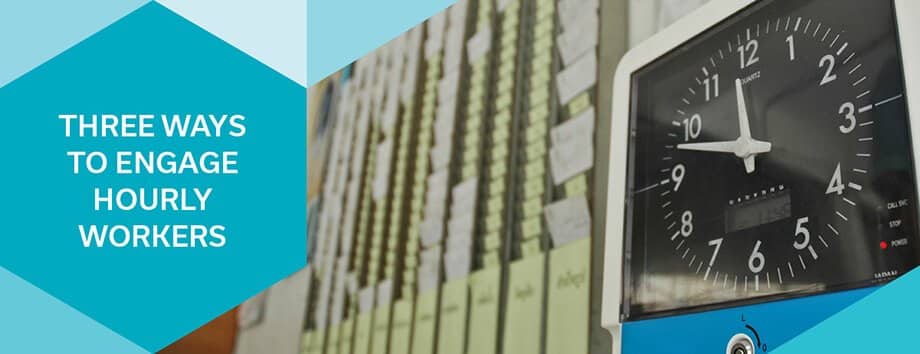There are many organizational differences between salaried (exempt) and hourly (non-exempt) employees, so trying to engage them in the same way doesn’t always pan out. It’s likely your hourly staff won’t respond the same way your salaried staff will. A study by the Wilson Group found that these two groups of employees simply have diverse values in the workplace.
Due to these differing priorities, you’ll need to get creative with ideas to improve employee engagement. But don’t fret—we’re here to guide you! Surprisingly, money isn’t the answer. For example, workers aren’t more motivated if they’re offered 20% more than base pay versus 5%.
Here are a few tips to engage hourly workers that don’t involve financial incentives:
1. Allow Flexible Schedules
Workplace flexibility means two different things for hourly and salaried employees. Salaried employees usually want the flexibility of working 7am to 4pm instead of 8am to 5pm, or compressing their work week into four days. These aren’t typically options for hourly staff members.
However, you can offer flexibility by allowing hourly workers to trade schedules with their coworkers or give them the opportunity to voice what schedule would work best for them. Maybe even allow senior staff members to pick their shifts first to reward loyalty. Giving employees a hand in creating their schedule is an excellent way to increase engagement and reduce turnover.
2. Optimize Internal Communications
Hourly employees often feel disconnected from the rest of the organization. They likely don’t have easy access to email (or even have a corporate email address) like their salaried counterparts, and when companies rely heavily on email for communication, hourly employees get left out. Here are some ways to spot if your company has an internal communication problem.
Implementing a digital internal communications system that allows non-exempt workers to stay in contact with the rest of the company is one of the best ways to engage your hourly employees. If you decide to give workers schedule flexibility as previously mentioned, an internal communication platform could be an incredibly useful tool. Colleagues could trade shifts with little to no headache. It would also make it easier to send updates or crisis communications, boost morale—the sky’s the limit!
3. Recognize the Value of Hourly Positions
Over half of the U.S. workforce is made up of hourly workers, yet many don’t understand how they fit into their respective companies as a whole. They go about their daily routine, but they may not know the role their piece plays in the larger puzzle. When employees lack meaning in their jobs, they tend to be less enthusiastic about coming to work.
Instead, instill a sense of purpose in your hourly employees and show them just how vital their role is to you and the company. It can dramatically alter their mindsets and make them feel like an essential part of the team. For example, one study found that a hospital janitor viewed himself as a key player in saving patients’ lives rather than just someone cleaning rooms. He reasoned that unsanitary conditions could be the difference between life and death in a hospital. This janitor understands how he fits in, why his job matters, and is a team player because of it—a notion that could be applied to anyone in an organization.
Miguel Fajardo, Operations Manager at logistics company ShipMonk, does a great job of fostering engagement in an industry with historically high turnover. He holds competitions and the winner gets a gift card at the end of the month. The team also votes for a MVP every month and this winner gets an even bigger prize. Miguel comments, “While we embrace competition as a form of engagement, collaboration is the ticket to the biggest wins. Beyond competitions, a huge part of this job is being relatable. I worked in warehouses for years. I know the drill. I know how rough it can be working 10 hour days on the warehouse floor, and how unforgiving the situations can be. And the team members know that I can relate to that, so I feel like they are more engaged because they feel that I’m engaged with them to try to make their lives and work easier as best as I can.”
Hourly employees have different needs and incentives than other types of employees—both of which are important to consider when running a business. By being more cognizant of your colleagues’ needs and being relatable, you can create a more engaged and empathic organization.







